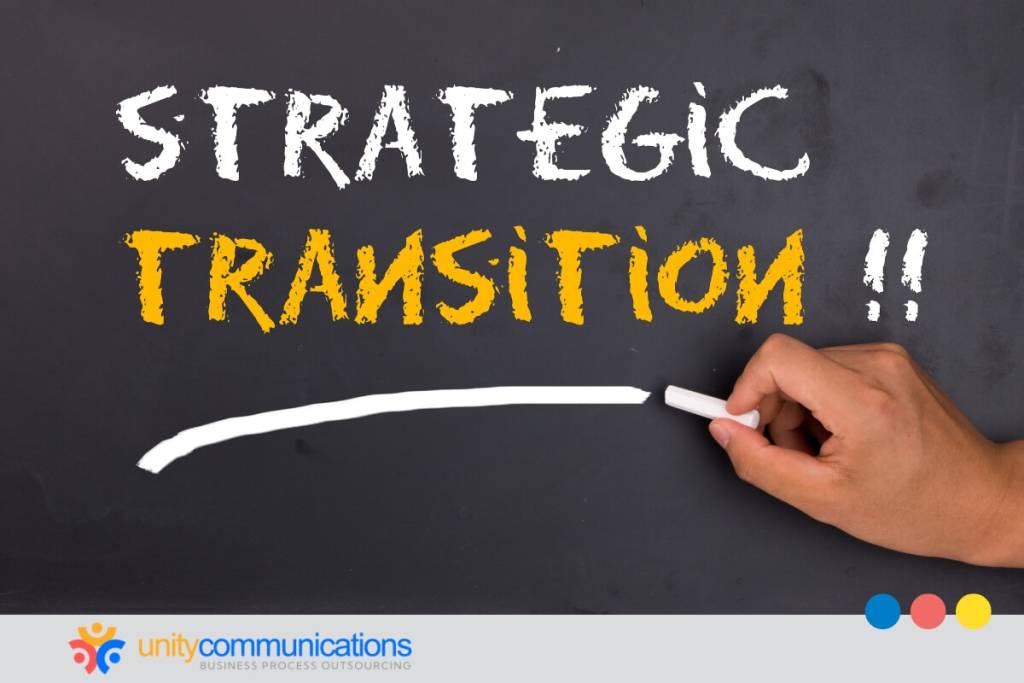Table of Contents
Building and managing a global remote team requires complex legal arrangements. Thus, businesses that want to hire overseas talent partner with third-party companies that offer employer of record (EOR) services.
EOR services streamline human resources (HR) and employment processes. However, to maximize benefits, a seamless and effective transition to an employer of record model is necessary.
If you are considering working with an EOR provider and want to learn more about the transition process, this article is for you. It provides an overview of the practice and discusses steps for a successful EOR integration.
Why businesses are switching to an EOR model

Before exploring EOR integration tactics, you must understand the strategy’s purpose and benefits. A type of business process outsourcing (BPO), EOR involves delegating HR tasks to a third-party provider.
Compared to staffing agencies, an EOR partner acts as the employer and takes legal responsibility for your overseas team. It handles every aspect of your administrative HR duties, from data entry services to the following functions:
- Employment contracts
- Onboarding and offboarding
- Payroll processing
- Benefits administration
- Tax filings and registrations
- Employee termination management
More companies are transitioning to an employer of record model. The global EOR market was worth almost $4.3 billion in 2023 and could reach $66 billion by 2030.
What makes EOR services popular, and why should you consider it? Besides managing complex and time-consuming administrative to-dos, a provider offers the following advantages:
- Simplified global expansion. Entering new markets is challenging due to the difference in employment laws and regulations. An EOR handles compliance so you can hire international talent without setting up legal agencies in each location.
- Broad talent pool. By removing geographical limitations, an EOR firm lets you tap into a global pool of skilled professionals. You have more options to find the best talent for your needs, regardless of location.
- Mitigated risk for noncompliance. Staying up-to-date on complex regulations across different countries is tedious. EOR providers help you keep up with local labor laws and tax regulations, minimizing the risk of legal issues and fines.
- Improved scalability. Transitioning to an employer of record model allows you to easily adjust your workforce as your business grows and its needs change. This scalability provides better flexibility compared to a traditional in-house HR approach.
- Faster onboarding. Many EOR providers have customizable onboarding procedures for your new hires. This feature reduces the time needed to gather information, complete forms, and set up access to essential tools and resources.
Partnering with an EOR streamlines routine HR tasks while maintaining high standards. It empowers you to focus on strengthening your business without worrying about the complexities of global remote workforce management.
Tips and best practices for a seamless EOR integration

EOR services help businesses minimize disruptions, improve data accuracy and security, maintain compliance, and build strong relationships. Businesses can maximize these advantages by effectively adopting the practice.
Below are the critical steps and best practices for successfully implementing an EOR model in your business:
1. Evaluate your HR needs
Carefully examine your current HR practices and identify areas where a provider can offer the most value. Look for challenges and pain points in your process and limitations in your resources.
Consider these questions before transitioning to an employer of record model:
- Do you need help managing a geographically dispersed workforce?
- Does global expansion seem daunting due to complex regulations?
- Does your business experience frequent fluctuations in staffing needs?
- Do you want to stay updated on employment laws?
- Do you have an HR team to handle complex tasks for a global workforce?
- Do you have a system for storing and managing employee data?
Because EOR services come with additional costs, evaluate your budget and conduct a cost-benefit analysis. Weighing the expenses of a partnership against potential cost savings, such as the indirect savings from a reduced workload and lack of penalties, maintains a positive bottom line.
Find the right EOR partner by understanding your specific needs and capabilities.
2. Conduct legal and compliance audits
This crucial step of EOR integration helps identify compliance gaps in your current HR practices. Perform these audits internally or with an external auditing firm, focusing on the following aspects:
- Employment contracts
- Payroll calculations
- Tax compliance
- Benefits administration
- Immigration compliance (if applicable)
Identifying relevant issues allows you to address them before transitioning to an employer of record model, eliminating the risks of legal penalties and disputes. It also promotes a smoother onboarding process with your provider.
3. Engage stakeholders early on
Engaging stakeholders early is crucial for the success of the EOR partnership. Stakeholders can better understand their roles and the model’s implications and contribute to the selection process and transition plan. Additionally, diverse perspectives help identify potential challenges during the transition.
Below are the primary stakeholders you must involve in your EOR initiative:
- HR department. Your internal HR team is crucial in the transition as they need to provide employee data to the EOR partner. They also communicate the decision throughout the company and onboard the workforce.
- Finance team. Finance specialists help you understand EOR costs and work with the provider on payroll processing and tax compliance.
- Legal department. Complying with relevant regulations is critical during the transition. The legal team can review contracts and address potential issues.
- Information technology (IT) unit. As with IT support outsourcing, involving a technical team ensures seamless data transfer and compatibility with your existing software.
Form a cross-functional team to engage stakeholders and make the transition easier. Schedule regular meetings to discuss progress and keep everyone updated. If necessary, train employees on the EOR model and new platforms or processes.
4. Research and select the right EOR partner
With your set objectives and expectations, compare potential EOR providers based on the following:
- Industry expertise
- Service scope
- Compliance expertise
- Technology and security
- Scalability and flexibility
Browse their websites, marketing materials, case studies, and client reviews. Study different pricing models before transitioning to an employer of record model. Prioritize providers with transparent pay structures and be wary of hidden fees in initial quotes. Do not hesitate to ask your prospects for a more precise explanation of their rates.
When researching and selecting a provider, go beyond the primary criteria. Assess their communication style, cultural fit, and additional services to determine whether their practices align with your expectations and needs.
5. Communicate the transition with your employees
A successful transition hinges on clear and open communication with your employees. Without it, the switch can cause confusion and anxiety and potentially disrupt morale. Informing your internal team about the EOR partnership in advance is ideal.
Explain the model and its role in employment. Address potential concerns about benefits, taxes, and job security to maintain morale and trust during the change. Provide regular updates throughout the process to keep staff informed.
Utilize various communication channels and strategies, including company meetings, town halls, emails, and internal platforms. Conducting anonymous question-and-answer (Q&A) sessions also helps address any lingering anxieties. Remember to encourage your internal employees to ask questions and voice their concerns regarding the switch.
6. Transfer and document relevant data
The EOR will need access to various data to streamline onboarding, payroll processing, benefits administration, and compliance. They require employee information, compensation details, tax documents, employment contacts, and work history.
The service vendor heavily relies on accurate and efficient data transfer to reduce errors and costs. Use these strategies for a smooth transition to an employer of record model:
- Gather employee data before the transition.
- Double-check data for accuracy and collect all the necessary documents.
- Work with the EOR firm to understand their preferred data format.
- Use secure methods such as encryptions and passwords to transfer electronic data.
- Keep detailed records of transferred data, including the information provided, when it was sent, and who received it.
7. Monitor the transition phase
Switching to an EOR model is a continuous process. Monitor the initial phase closely to ensure a smooth handover and catch potential issues early.
Evaluate the success of the EOR transition using key performance indicators (KPIs). Utilize the data collected to identify trends and understand the process’s strengths and weaknesses.
Maintain open communication with all parties involved. This step helps you detect and address issues promptly, foster a culture of collaboration, and build trust and transparency.
Lastly, adapt and improve your approach based on what you learned. Remember, EOR models are not one-size-fits-all solutions. Providers can better tailor the solutions to your needs with continuous monitoring and evaluation.
The bottom line

A successful transition to an EOR model requires adequate preparation and proactive intervention. Before entering a partnership, define your HR needs, conduct compliance audits, engage stakeholders, and find the right provider.
After that, communicate the transition with your internal teams to minimize disruptions and avoid low employee morale. Facilitate a seamless data transfer and regularly monitor the process to ensure effective EOR integration.
Follow these steps to maximize the many benefits of EOR services. If you want to learn more, let’s connect.




